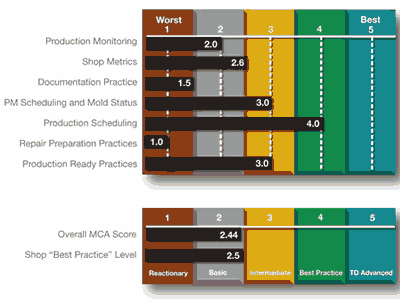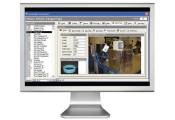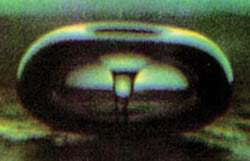Beyond the Classroom: Mold Maintenance Products That Work
Leaving injection mold maintenance to chance is a costly oversight. Using standardized methods of improvement, as explained here, can yield real change to company practices as well as significant returns on a company’s tooling investment.
Since 2001, ToolingDocs has traveled the U.S. presenting comprehensive, informative mold maintenance conferences. These unique gatherings are always very well received, with post-seminar surveys collecting high ratings for satisfaction. But what happens after a conference is over and it’s time to get back to reality? Often the conference binder ends up on the shelf with the toolroom remaining in a fire fighting culture. Most conference attendees acknowledge that their “Mold Pull Pace” is overwhelming; meaning they pull molds for repairs, breakdowns, tooling changes, end of run, etc., faster than they can get them repaired. This makes it a challenge to form effective initiatives and execute them, even after attending a conference that outlines straightforward improvement steps.
Alternatively, there may be a lack of company buy-in to train and develop the team. Whatever the reason, this is where ToolingDocs can step in to offer in-house products and services that can get a company on the road to mold maintenance best practices, as it did recently with a proprietary manufacturer of consumer goods based in Pennsylvania.
Maintenance Capability Assessment
An OEM in the plastics industry since the early 1970s, this company’s toolroom manager had attended a ToolingDocs conference years ago and, after reading about Maintenance Capability Assessments (MCA) in “Across the Bench” mold maintenance features in MoldMaking Technology, enlisted ToolingDocs to perform one at his plant.
An MCA is performed on-site, anywhere in the world, by trained industry veterans utilizing a thorough, systematic set of review tools. The purpose of an MCA is to accurately determine a company’s ability to maintain its molds to a high degree of production readiness, and with what degree of proficiency proper maintenance practices are being performed. Everything related to mold maintenance is examined, from initial mold start up in the press through the production run and finally at the point when it is pulled to be racked or benched. The resulting ratings (see the MCA Scorecard for this company’s scores) are consistently arrived at and a subsequent MCA can objectively show exactly where progress has been made.
An assessment of operations showed that this company’s products were “under no heavy scrutiny to perform to any demanding regulatory standards” and therefore “good part/bad part” determinations were the call of the Q/A, while “visual descriptions of flash and other part defects were purely subjective with no comparative measurements taken or recorded.” In addition, many “homemade” devices and outdated equipment, as well as a lack of good housekeeping procedures, were observed, all of which can lead to work being performed “half-way” or “just good enough”.
As shown in the MCA Scorecard, this OEM scored well in Production Scheduling. The company practiced good communications each morning to determine the past day’s events and to schedule around mold stop or other production issues. It also held twice weekly production meetings to schedule mold runs and PMs due. But other areas measured left room for improvement, including Production Monitoring, Shop Metrics, Documentation Practices and Repair Preparation Practices—all of which the company has been addressing with notable results since the MCA was completed.
“The biggest thing we’re working on is the reporting aspect,” the toolroom manager says. “What does it actually cost to run a mold? What are the extra costs we weren’t seeing before from labor, from the toolroom, spare tooling or the efficiencies of the mold? Tying it all together to build a comprehensive report tells us what our worst offenders are and where we need to focus in order to improve that particular mold or process. It tells us where we’re losing profits or where we can further gain profits.
“The mold manuals that ToolingDocs suggests implementing are another strong benefit of the MCA,” he adds. “It helps get all of the information in one place, under one cover, using standardized shop terminology, too, to keep everyone on the same page as they work on projects.”
More Maintenance Options
In addition to the MCA, there are two other products that help further the maintenance initiative, which may or may not be used in conjunction with an MCA.
Operating Standards Training (OST)—Usually performed after an MCA and developed according to the resulting MCA score, an OST involves systemizing the eight different repair stages that all technicians work through in conventional mold repair situations. OST training demonstrates what happens during these stages, what is needed in each stage and how they relate to one another when put into practice at the bench. The benefits of performing an OST include maximizing mold repair hours, while improving repair technicians’ skills.
Total Systems Implementation (TSI)—To guarantee that a maintenance initiative will not just fade away, ToolingDocs developed this complete maintenance package. It includes MoldTrax and one full year of ongoing assessments, training, audits and database maintenance. Employees are trained to document mold activities on an ongoing basis, and then technicians and supervisors are trained to use this information to develop targets for reducing Product Defect and Unscheduled Mold Stop. Several scheduled onsite sessions and frequent Webex conferences ensure continued adherence to implementation goals and targeted maintenance objectives throughout the year, as evidenced by improved MCA scorecards throughout the process.
Payback Time
Many benefits are realized through easy data analysis, including:
- Reduction of molded part defects, scrap and improved part quality
- Reduction of “Just In Case” spare parts
- Reduction of unscheduled downtime and loss of actual machine hours (AMH)
- Understanding the true cost of mold performance and maintenance
- Continuous improvement in mold performance and maintenance efficiency
- Accurate and quicker training of new employees
- Standardization of company terminology for product and mold defects and corrective actions
- Establishment of a world class mold maintenance facility
Like never before, corporations are scrutinizing their tooling costs and toolroom labor expense. But rather than just blindly slashing costs and risking expensive ramifications, proven methods for improvements and cost reductions can be implemented.
To illustrate, the OEM in Pennsylvania let ToolingDocs know of one notable MCA result: “With our costliest mold, which has eight cavities and produces about 4.5 million parts per year, we realized a savings of one half cent per part after implementing the steps recommended in the MCA. That half cent was buried in both outside purchased tooling and internal labor costs. When you consider that was one tool out of 300 active molds; you can do the math and see that there’s a lot of money to be saved plant-wide.”
Bottom Line
Although an MCA is a good place to start improving operations, there is still the need for actual classroom and bench training. That’s why ToolingDocs created a Maintenance Center in Ashland, OH, that provides at-the-bench, hands-on training for mold repair technicians: mold disassembly, cleaning and assembly techniques; the specifics of ultrasonic cleaning, dry ice blasting and other cleaning technologies; and data collection, analysis and goal setting.
It is a costly oversight to leave maintenance of injection molds to chance. Beyond gaining insights from seminars and magazine articles, real change to company practices can be achieved through the use of standardized methods of improvements. Integrating these established and proven practices and systems delivers significant returns on a company’s tooling investment.
Related Content
What You Need to Know About Hot Runner Systems and How to Optimize Their Performance
How to make the most out of the hot runner design, function and performance.
Read MorePortable Low-Heat, Non-Arcing Resistance Welder for Mold Repair
Rocklin’s user-friendly MoldMender Micro Welder delivers simple and cost-effective localized repair in-house with precision and versatility, enhancing mold and die durability and reducing disassembly and downtime.
Read More5 Hot Runner Tips for Moldmakers and Molders
Best practices for initial hot runner tryouts and effective preventive maintenance.
Read MoreHow to Use Thermal Management to Improve Mold Cooling
A review of common mold cooling issues and possible solutions, including 3D printing applications.
Read MoreRead Next
How to Decrease Your Internal Mold Maintenance Costs, Part 1
With an ultrasonic cleaning system, a mold shop can realize savings in cost, time and labor, as long as they are educated on the technology, the cleaning solutions and what works best for their particular situation/environment.
Read MoreReasons to Use Fiber Lasers for Mold Cleaning
Fiber lasers offer a simplicity, speed, control and portability, minimizing mold cleaning risks.
Read MoreHow to Use Strategic Planning Tools, Data to Manage the Human Side of Business
Q&A with Marion Wells, MMT EAB member and founder of Human Asset Management.
Read More








.jpg;maxWidth=300;quality=90)

.png;maxWidth=300;quality=90)




















